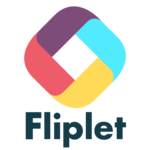Description

Frontegg

Sourcetrail
Comprehensive Overview: Frontegg vs Sourcetrail
Frontegg
a) Primary Functions and Target Markets
Frontegg is a platform that provides user management infrastructure for SaaS applications. It offers a robust suite of authentication and user management features, including login interfaces, multi-factor authentication (MFA), Single Sign-On (SSO), passwordless login, and user profile management. The service aims to empower development teams by providing these out-of-the-box capabilities, thereby reducing the engineering effort required to build secure and scalable user management features from scratch.
Target Markets: The primary target market for Frontegg is small to large SaaS companies that require efficient user management solutions without dedicating extensive resources to develop these in-house. Tech startups and enterprise SaaS are the key clientele, though any company deploying web applications seeking to streamline user authentication processes can benefit from Frontegg's offerings.
b) Market Share and User Base
Frontegg is a relatively young player in the identity and access management (IAM) market, yet it is gaining traction due to its developer-friendly approach and comprehensive feature set that aligns well with the needs of modern SaaS applications. While it may not command a vast market share compared to established IAM giants, its growth is powered by venture capital support and an increasing number of adopters looking for flexible, low-maintenance solutions.
c) Key Differentiating Factors
- Modularity and Customizability: Frontegg provides a highly customizable platform that can be adapted to specific business needs. Developers have the flexibility to integrate specific features without overhauling existing systems.
- User Experience: The platform emphasizes seamless end-user experiences with features such as customizable login boxes and workflows, enhancing overall user satisfaction.
- Rapid Deployment: With pre-built components, Frontegg allows for rapid integration into existing systems, significantly reducing time-to-market for new applications.
Sourcetrail
a) Primary Functions and Target Markets
Sourcetrail is an interactive source code explorer that helps developers understand and navigate large and complex codebases. It supports multiple programming languages and offers a graphical representation of the code structure, making it easier to track dependencies, functions, and relationships within the code.
Target Markets: Its primary users are software developers and engineers working with large and intricate codebases, particularly those in companies or projects where maintaining or understanding legacy code is a significant challenge. Sourcetrail's tools can also be valuable in educational settings to help students and new developers grasp programming concepts by visualizing code structure.
b) Market Share and User Base
Sourcetrail is a niche tool primarily used by developers who work with complex codebases and require tools for better source code comprehension. While its user base is smaller than mainstream development tools like IDEs (Integrated Development Environments), it is steadily adopted by teams and individuals who need a dedicated solution for codebase visualization and navigation.
c) Key Differentiating Factors
- Visualization Capabilities: Sourcetrail stands out with its ability to create detailed, interactive maps of codebases, which is particularly useful for understanding and maintaining complex projects.
- Cross-Language Support: It supports multiple languages, which allows developers to work across different codebases with a single tool.
- Focus on Comprehension: Unlike standard IDEs, Sourcetrail is exclusively focused on code exploration and comprehension rather than code editing or compilation, filling a niche gap in the developer tool market.
Comparison Between Frontegg and Sourcetrail
Market Position
- Frontegg positions itself within the SaaS industry focusing on IAM, while Sourcetrail serves a more niche market in the software development lifecycle focusing on code comprehension.
- Frontegg's growth is driven by the increasing need for streamlined user authentication in SaaS applications, while Sourcetrail grows with the continuous need for effective code management solutions.
User Base
- Frontegg's user base consists mostly of teams building SaaS applications who need robust user management solutions.
- Sourcetrail appeals to individual developers or teams in need of better codebase navigation tools, particularly useful for those dealing with complex or legacy systems.
Differentiating Factors
- Frontegg offers rapid deployment with out-of-the-box user authentication features and a concentration on enhancing the user experience.
- Sourcetrail offers advanced visualization of code structures, providing a unique tool that enhances developers' understanding of large and intricate codebases.
Each tool serves a distinct purpose within the software development ecosystem, and their value is maximized when utilized by the right audience for the right application needs.
Contact Info

Year founded :
2019
+1 234-567-8992
Not Available
United States
http://www.linkedin.com/company/frontegg

Year founded :
2015
Not Available
Not Available
Austria
Not Available
Feature Similarity Breakdown: Frontegg, Sourcetrail
To provide a feature similarity breakdown for Frontegg and Sourcetrail, we should consider that Frontegg and Sourcetrail serve different core purposes: Frontegg is primarily a tool for managing user infrastructure and providing user authentication and management features, while Sourcetrail is a source code explorer that aids developers in understanding and navigating complex codebases. This distinction will naturally influence the core features and design of each tool.
a) Core Features in Common:
While Frontegg and Sourcetrail target different aspects of the software development lifecycle, there are a few broad features they share:
-
Developer Tooling: Both tools aim to improve the developer experience. Frontegg enhances the ability to manage user authentication and other backend processes, while Sourcetrail improves code navigation and understanding.
-
Integration Capabilities: Both tools integrate with other software and development tools to enhance their functionality within the software development environment. Frontegg integrates with identity providers and customer management systems, while Sourcetrail integrates with various IDEs and supports different programming languages.
-
Focus on User Experience: Each product places a high priority on user-friendly interfaces to improve efficiency and productivity for developers, though the nature of the interface reflects their different functions.
b) User Interface Comparison:
-
Frontegg: The UI of Frontegg is centered around user management and authentication processes. It typically includes dashboards for admin settings, user roles, permissions, and customizable authentication flows. The emphasis is on ease of use for administrators and developers responsible for user management tasks.
-
Sourcetrail: The UI of Sourcetrail is designed for visualizing code structure. It provides a graphical representation of code relationships and dependencies, allowing users to navigate through complex code with ease. The focus is on providing clear insights into codebases and enhancing the code comprehension process for developers.
While both interfaces strive for usability, Frontegg's interface is more form-based and management-focused, whereas Sourcetrail offers a visual, graph-based approach tailored to code exploration and understanding.
c) Unique Features:
-
Frontegg:
- Authentication and Security: Frontegg provides comprehensive solutions for multi-factor authentication (MFA), social logins, and security policies. These are critical for applications requiring robust user access controls.
- User Management: Features like role-based access control (RBAC) and user activity monitoring are unique to Frontegg's focus on managing user ecosystems.
-
Sourcetrail:
- Code Visualization: Sourcetrail uniquely offers interactive visual maps of the codebase, helping developers quickly understand complex code structures and data flows.
- Cross-Reference Navigation: This feature helps users navigate through various components of code efficiently, understanding how different parts interact.
In conclusion, while Frontegg and Sourcetrail both aim to streamline certain processes for developers, they address very different needs within a software development lifecycle. These differences lead to distinct sets of features and interfaces, with each product tailored uniquely to its domain of expertise.
Features

Not Available

Not Available
Best Fit Use Cases: Frontegg, Sourcetrail
Frontegg:
a) For what types of businesses or projects is Frontegg the best choice?
Frontegg is a platform that provides user management capabilities and a suite of authentication features to enhance SaaS applications. It is an excellent choice for:
-
SaaS Companies: Especially those that need to quickly implement authentication and user management features like multi-factor authentication (MFA), single sign-on (SSO), social logins, and role-based access control. This is particularly useful for SaaS startups looking to accelerate their time-to-market without investing heavily in building these features from scratch.
-
Tech Companies: That require the flexibility to address a diverse array of user authentication needs across various platforms.
-
Product Teams: Focused on core product functionalities and prefer to outsource standard, yet complex, security and authentication functionalities to a specialist platform.
-
Companies Emphasizing Security: Those that must comply with stringent security requirements and standards, taking advantage of Frontegg’s robust security features.
d) How do these products cater to different industry verticals or company sizes?
-
Industry Verticals: Frontegg serves verticals such as finance, healthcare, and other highly regulated industries where advanced user management and security features are critical.
-
Company Sizes: It caters to a spectrum of company sizes, from startups needing a head start with robust authentication features to larger enterprises looking to enhance or replace their existing authentication systems without significant redevelopment.
Sourcetrail:
b) In what scenarios would Sourcetrail be the preferred option?
Sourcetrail is a source code visualization and cross-referencing tool, ideal for:
-
Software Developers and Engineers: Particularly those working on large or legacy codebases where understanding complex code structures is a daily challenge.
-
Development Teams Engaged in Code Refactoring: It helps in visualizing dependencies and understanding the impact of changes across a codebase.
-
Organizations with Steep Learning Curves: Teams with new developers who need to familiarize themselves with existing projects quickly and effectively.
-
Education and Training: Institutions or programs teaching software development, where visual aids could enhance the learning experience.
d) How do these products cater to different industry verticals or company sizes?
-
Industry Verticals: Sourcetrail is generic enough to fit a broad range of verticals from tech and product companies to educational institutions and any domain involving substantial software development efforts like automotive or gaming industries.
-
Company Sizes: It benefits small development teams within startups to large-scale enterprise teams. For small teams, it aids in gaining quick insights into new projects or personnel transitions. Larger companies can leverage it to standardize understanding among diverse teams working on expansive and complex codebases.
Pricing

Pricing Not Available

Pricing Not Available
Metrics History
Metrics History
Comparing teamSize across companies
Conclusion & Final Verdict: Frontegg vs Sourcetrail
To provide a conclusion and final verdict on Frontegg and Sourcetrail, let's break down the analysis into the required components:
a) Best Overall Value
Frontegg and Sourcetrail serve different purposes and cater to different user needs, which makes the comparison of overall value dependent on the specific context and requirements:
-
Frontegg: A user management platform focused on SaaS applications, offering features like authentication, user management, and admin portals. Frontegg’s value comes from its ability to accelerate development timelines for SaaS products by handling complex user infrastructure needs out of the box.
-
Sourcetrail: A cross-platform source code explorer designed to help developers understand and analyze existing codebases effectively. Its value is rooted in simplifying the process of learning and navigating large codebases, enhancing productivity for developers working with legacy code or team projects.
Considering these factors, the best overall value depends heavily on the specific use case:
- For companies needing scalable user management solutions, Frontegg offers greater value.
- For developers or teams that need improved codebase navigation and understanding, Sourcetrail is more valuable.
b) Pros and Cons
Frontegg:
-
Pros:
- Comprehensive user management features.
- Quick integration with existing SaaS products.
- Enhances security with features like SSO and MFA.
- Reduces time-to-market for SaaS applications by taking care of authentication and user account management.
-
Cons:
- May be over-engineered for small projects or standalone applications with simple user management needs.
- Dependence on a third-party service for essential application infrastructure, which could introduce risks related to vendor changes or downtimes.
Sourcetrail:
-
Pros:
- Facilitates quicker understanding of complex and large codebases.
- Cross-platform support makes it versatile for different development environments.
- Visual representation of code relationships greatly aids in debugging and feature enhancements.
-
Cons:
- Primarily a read-only tool, which means it does not modify code.
- Might not offer significant advantages for developers working with small or well-documented codebases.
c) Recommendations
For users trying to decide between Frontegg and Sourcetrail:
-
Purpose-Driven Decision: Align your choice with the primary challenges you face:
- Choose Frontegg if your primary need is handling user management for a SaaS product. It’s particularly useful for startups or companies looking to scale quickly without building complex authentication systems in-house.
- Opt for Sourcetrail if you require assistance with codebase exploration, understanding, and documentation. It’s ideal for teams working on legacy systems or for onboarding developers to existing projects.
-
Trial and Evaluation: Leverage any free trials or demo options provided by both services to get hands-on experience with the product in your specific environment. This can provide practical insights that may not be obvious from feature lists alone.
-
Integration and Ecosystem Compatibility: Consider how each product fits within your current technology stack or workflow. Evaluate integration capabilities and ecosystem compatibility to ensure a smooth addition to your existing processes.
Ultimately, the decision should be based on which product aligns more closely with your current needs and future growth plans, bearing in mind the technical and business goals of your team or organization.
Add to compare
Add similar companies




